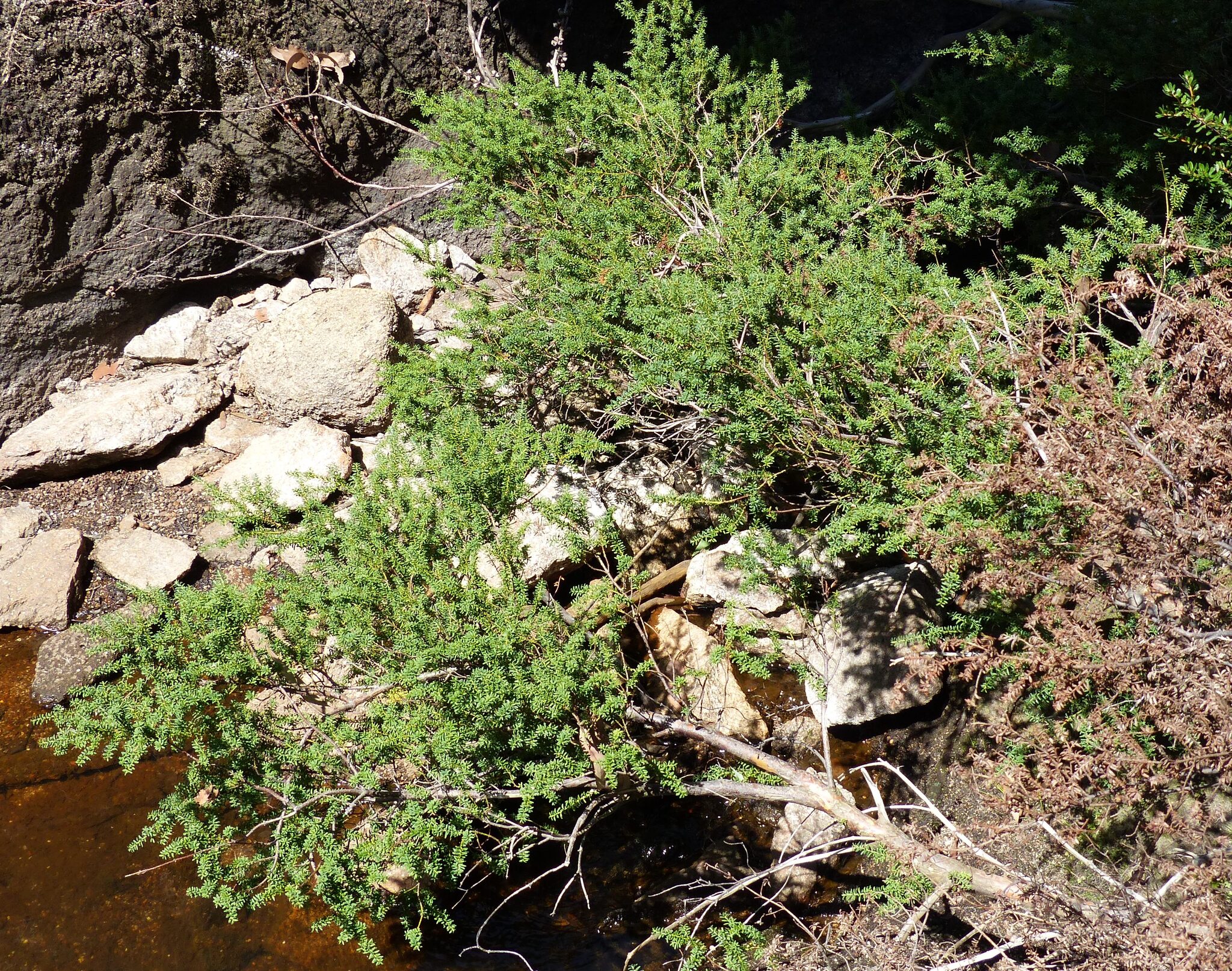
Greek pous - foot, karpos - fruit; referring to the fleshy fruit stalk of many species.
Evergreen trees and sometimes shrubs. Leaves mostly linear-lanceolate to over 20 cm long, spirally arranged or occasionally appearing opposite; midrib pronounced and raised on the lower surface. Plants unisexual. Male cones cylindrical, 1-2 cm long, 3-5 mm wide, solitary or in groups or spikes in axils of upper leaves. Female cones axillary or terminal, mostly solitary, rarely in clusters, sometimes stalked, scales mostly 2-4; ovules solitary or in pairs with a scale-like bract, only 1 ovule usually matures, the surrounding tissue forming a fleshy, often brightly coloured stalk (receptacle).
Rarely cultivated species:
Sundacarpus, formerly a single-species section of the genus, is now recognised at the generic level as Sundacarpus amara (Blume) C.N. Page: it grows naturally in Malesia and NE coastal Queensland and is occasionally cultivated in warmer districts; it differs from Podocarpus in lacking a swollen fleshy receptacle and has unique long, more or less linear, articulated and ranked leaves.
Podocarpus neriifolius D. Don, is also occasionally grown in warm districts; it is the most widespread species of the genus found in almost the entire Asian-Pacific wet tropical forest zone and is recognised by its long, drooping, pointed leaves that are reddish at first, also the fruit with a bright red, two-bracted fleshy receptacle. It is superficially similar to P. henkelii Stapf, Henkel's Yellow-wood from South Africa, which has a leathery, green non-bracted receptacle and is also sometimes offered in the trade and there are fine specimens at the Adelaide Bot. Gds.
Podocarpus spinulosus (Sm.) R. Br. ex Mirb. growing in sheltered coastal areas and gulleys of New South Wales and Queensland is occasionally offered in the nursery trade and grown in botanic gardens: it is a straggling shrub with needle-pointed leaves 2-6 cm long and a fleshy blue-black receptacles. Other species occasionally available in the nursery trade include P. salignus, P. macrophyllus and P. macrophyllus var. maki, the latter poor, both grown at Mt Tomah Bot. Gds.
Podocarpus drouynianus F. Muell., the only Western Australian species, which is a survivor of ancient rainforests and able to regenerate after fires by throwing out shoots, is occasionally grown in botanic gardens.
A large, essentially Southern Hemisphere genus of about 95 species found mostly in warm-temperate to tropical areas. A few in cooler parts of S America, New Zealand and Australia (c. 6 species in Australia, 1 native to Victoria and Tasmania, north through Malesia (30 species) to China, Japan and Nepal.
Thirty three species were in cultivation at the Otway Ridge Arboretum in Victoria in 1991.
Leaves often quite broad; fruits with fleshy stalk.
De Laubenfels (1985), Webby (1987), Hutchins (1991).
Source: (1995). Podocarpaceae. In: . Horticultural Flora of South-eastern Australia. Volume 1, Ferns, conifers & their allies. The identification of garden and cultivated plants. University of New South Wales Press.
